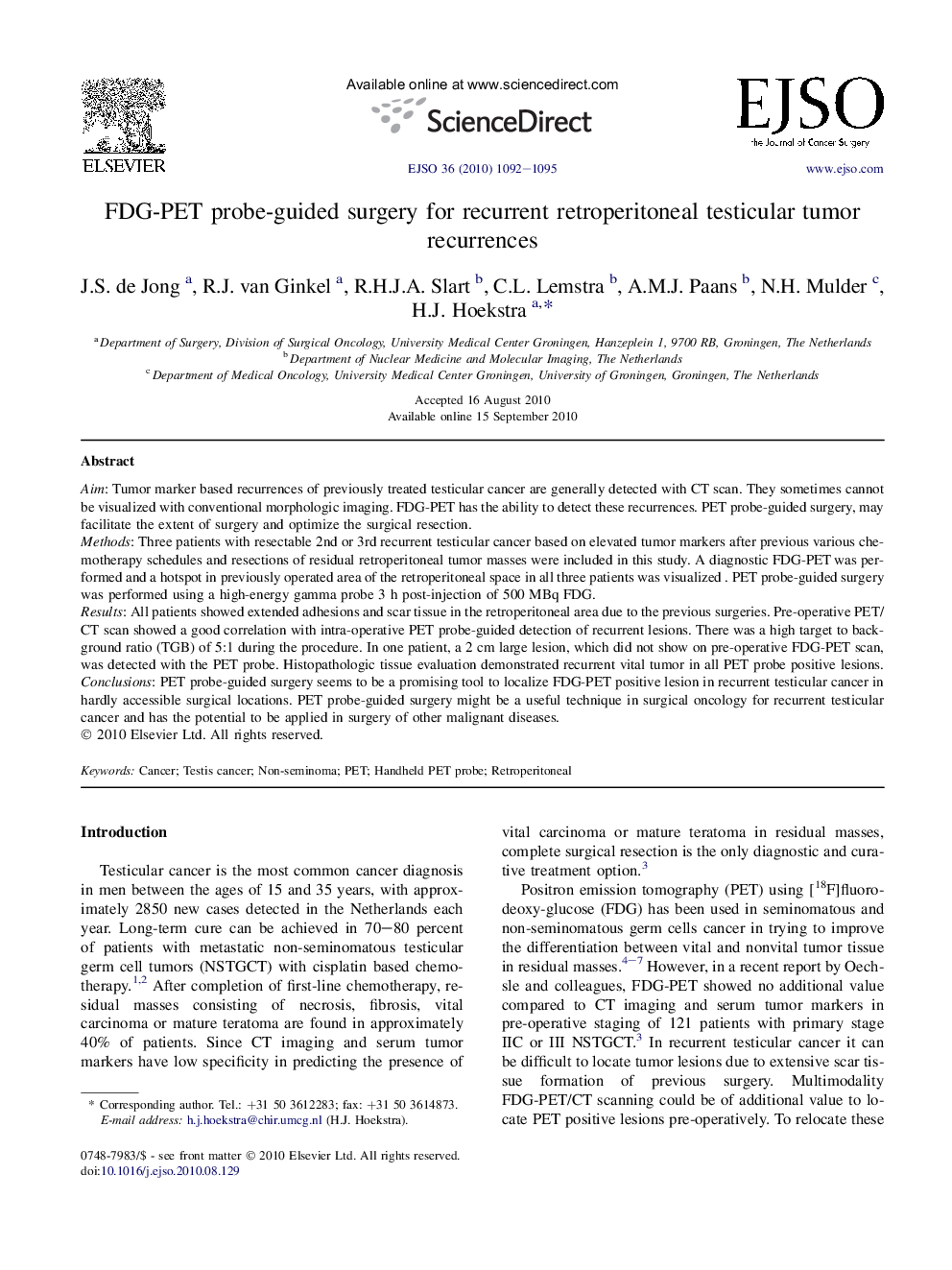| Article ID | Journal | Published Year | Pages | File Type |
|---|---|---|---|---|
| 3987310 | European Journal of Surgical Oncology (EJSO) | 2010 | 4 Pages |
AimTumor marker based recurrences of previously treated testicular cancer are generally detected with CT scan. They sometimes cannot be visualized with conventional morphologic imaging. FDG-PET has the ability to detect these recurrences. PET probe-guided surgery, may facilitate the extent of surgery and optimize the surgical resection.MethodsThree patients with resectable 2nd or 3rd recurrent testicular cancer based on elevated tumor markers after previous various chemotherapy schedules and resections of residual retroperitoneal tumor masses were included in this study. A diagnostic FDG-PET was performed and a hotspot in previously operated area of the retroperitoneal space in all three patients was visualized. PET probe-guided surgery was performed using a high-energy gamma probe 3 h post-injection of 500 MBq FDG.ResultsAll patients showed extended adhesions and scar tissue in the retroperitoneal area due to the previous surgeries. Pre-operative PET/CT scan showed a good correlation with intra-operative PET probe-guided detection of recurrent lesions. There was a high target to background ratio (TGB) of 5:1 during the procedure. In one patient, a 2 cm large lesion, which did not show on pre-operative FDG-PET scan, was detected with the PET probe. Histopathologic tissue evaluation demonstrated recurrent vital tumor in all PET probe positive lesions.ConclusionsPET probe-guided surgery seems to be a promising tool to localize FDG-PET positive lesion in recurrent testicular cancer in hardly accessible surgical locations. PET probe-guided surgery might be a useful technique in surgical oncology for recurrent testicular cancer and has the potential to be applied in surgery of other malignant diseases.
